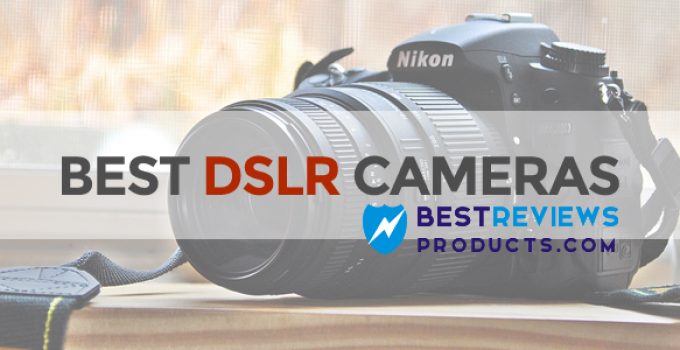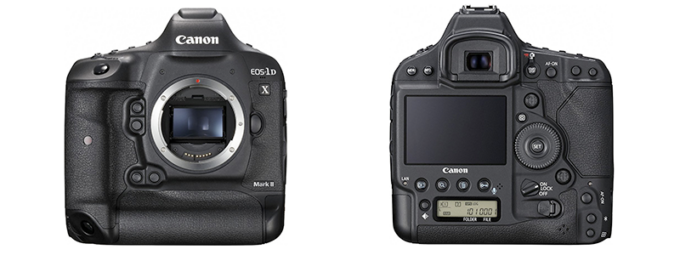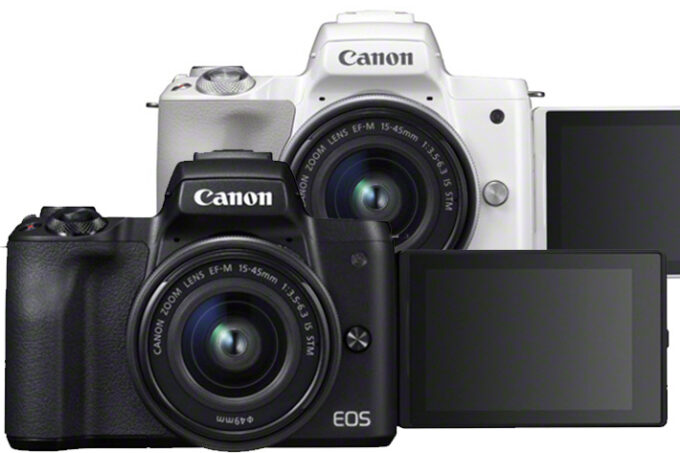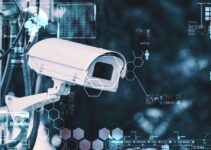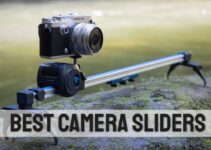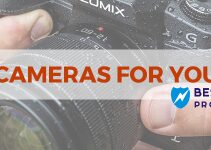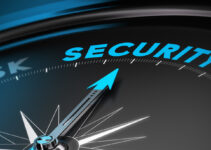For years, best DSLR cameras were the only option around, but you’ll be hard-pressed to discover a pro with no digital camera in their bag nowadays. Unfortunately, locating the best DSLR camera is much easier said than done considering the wealth of options available today.
If you have been taking snapshots with high-end electronic cameras for many years, feel free to skip ahead to our best selections. Otherwise, you’ll want to stick around as our DSLR buying guide will make your choice easier if you are new to the photography scene.
How to Choose Best DSLR Camera
When picking a best DSLR camera, there’s a laundry list of things you will want to keep in mind. Well, we are going to offer you a quick crash course about the features you need to hone in on. There’s more to a quality camera compared to the size of the sensor although that’s the best place to start…
The Sensor
Sensor size is important as a 42MP camera will clearly take higher quality pictures than a DSLR with an 18MP sensor. The arrangement is exactly what you will want to concentrate on, but so you will need to contemplate full-frame or APS-C. The latter will become more popular in modern cameras however has less surface area than the usual full-frame sensor that mimics a picture frame in 36 x 24.
ISO range also comes into play and is a specification you are always going to wish to check on. This stat tells you how much light that the camera can capture and while each camera has a base number, there’s also an”extended” range on all the best cameras.
Auto Focus
As the name suggests, a camera using this feature focuses on your topic automatically. It may take a great deal of guesswork out of things for novices and is something you’ll discover on every DSLR camera on the list. How well it is managed varies tremendously across the plank as to the number of AF points you get to perform with. In a nutshell, the more points, the greater.
Viewfinder and Displays
The viewfinder will arrive in two forms with optical or electronic. Optical viewfinders are timeless and something just about everyone has employed if you’ve owned a conventional film camera. An EVF replaces mirrors with a small display that provides you with a digital look in your scene. Some cameras also have little digital panels throughout the top that provide you key tech specs.
The other type of display is of the LCD number and resides on the rear of the camera. These panels are often approximately 3″ and give you a live view of this activity. Cheap DSLR cameras might have a fixed screen while high-end models generally have panels that tilt or swivel.
Extra Features
As with any tech device, there are always a few added features that help separate the best from the rest. Together with DSLR cameras, among the bigger ones will be Wi-Fi and NFC. Bluetooth is a bit more common although not nearly as useful as the others in most cases. You will also need to pay close attention to the sort of jacks available, especially in the event that you want an external microphone for video.
The 4K recording is hit or miss, but certainly, a characteristic to think about alongside modes that kick your snapshots up to a few notches. If you are just starting out, you will also want to listen to what is included with the camera.
They all come with a battery, and some may even have a bag, but a lens might not be included. Those old lenses on your camera bag may not function to your new DSLR too, so think about your existing lenses if you plan on changing brands.
14 Best DSLR Cameras
1. Nikon D3500
Best Budget Nikon DSLR Camera
The Nikon D3500 is a budget-friendly DSLR camera that is ideal for beginners ready to make the jump. That includes students taking their first photography course and people that are tired of taking family photos with their smartphone.
Ease of use is the big draw of this specific camera because its simple enough to pick up and use regardless of your experience. Beginners can take professional-looking photos without having to browse tutorials, and there are enough features to please seasoned users given the price point. That includes an ISO assortment of 100 to 25,600 and built-in Bluetooth for social sharing.
Nikon utilized a 24MP CMOS sensor at the D3500, and it’s capable of shooting at 5 frames per second. The video capabilities are capped at FHD, which means you won’t receive 4K with this one although the pictures will pop up. The AF system includes 11 autofocus points together with face detection and resides view along with comparison and phase detection. In terms of the LCD, it is adjusted but 3″ using 921,000 dots along with a 95% coverage range.
The Nikon D3500 is a little update over the previous edition, but a very good camera nonetheless. The critical tech specs are on par or better compared to other entry-level DSLR cameras although we wish Wi-Fi was included.
2. Nikon D850
Full Frame Nikon DSLR Camera With Best Battery
High speed, full-frame sensor, sharp processing — that’s all about Nikon D850. Having such image sensor Nikon D850 produces high-grade photographs and has fast data readout. But note that there is not any optical low-pass filter.
There is a 45.7-megapixel resolution which is suitable for shooting of fast actions. In any case, Nikon D850 offers autofocus, Speedlight controller, quiet photography in live-view mode, focus change capability and other useful options. Its ISO is super low and may reach ISO 64 as well as ISO 32. Therefore, you can count on a top-notch dynamic range.
As to its shooting speed, Nikon D850 has up to 9 fps at full resolution with full AF performance. What is more, this DSLR camera offers full-frame 4K UHD movie recording.
Specification:
- Sensor: BSI FX-format full-frame CMOS
- Megapixels: 45.7 mp
- Max ISO: 25,600 (expandable to: 102,400)
- Shooting Speed: 9 fps
3. Canon EOS Rebel SL2
Best Semi-professional DSLR Camera
EOS Rebel SL2 is a user-friendly camera that could function as a budget alternative to a costly Nikon D850. What is more, it’s much milder. Having Dual Pixel CMOS AF Canon EOS Rebel SL2 supplies rapid autofocusing speed at 0.03 sec. There is also an option of phase-detection that helps to ascertain the subject distance quickly and accurately.
This Canon camera supports Complete HD at 60p and generates a smooth and smooth recording. By the by, it is equipped with the DIGIC 7 Image Processor that makes the pictures sharp and sharp. Its wide ISO range also allows you to adjust the camera to various lighting conditions.
You won’t be disappointed with the sound quality too. Still, if you’re striving for the acme of perfection you are able to utilize its external microphone input signal to match its internal microphone. Its Feature Assistant function will help you to make your photos even more professional as it explains and exemplifies the camera’s shooting modes and their consequences with sample photos of every mode.
Specification:
- Sensor: CMOS (APS-C)
- Megapixels: 24.2 mp
- Max ISO: 25,600 (expandable to: 51,200)
- Shooting Speed: 5 fps
4. Canon EOS Rebel T7i
Best Canon DSLR Under $1000
The other Canon DSLR camera that deserves your attention and might pretend to be called the best budget camera is EOS Rebel T7i. As well as the pre-cited Rebel SL2 this one is given an optical viewfinder and Double Pixel CMOS AF. Thus, you will be always able to find the real scene you are taking an image of and receive your attention on it as fast as possible.
In addition to this, EOS Rebel T7i has an option of Movie Electronic IS6, which helps to minimize the blurring effect of camera shake and constantly get movies that are smooth. Incidentally, should you use it with a compatible Canon lens Movie Electronic IS you may get 5-axis stabilization in the horizontal, vertical and rotational planes.
There is also an option of HDR movies and photos to provide your images with more natural colors and bright particulars. The time-lapse film is included as well.
Specification:
- Sensor: CMOS (APS-C)
- Megapixels: 24.2 mp
- Max ISO: 25,600 (expandable to: 51,200)
- Shooting Speed: 6 fps
5. Canon EOS 6D Mark II
Very Durable DSLR Camera
Contrary to the previous Canon models EOS 6D Mark II is not an inexpensive camera. Consequently, it usually means that this DSLR camera is of a higher quality and has more useful options to take professional photographs.
As a result of its shooting speed of 6.5 fps, it’s possible to capture fast-moving items without losing picture sharpness. Add to this a 26.2 Megapixel CMOS sensor and DIGIC 7 Picture Processor and you will get smooth and accurate graphics. By the way, unlike Nikon D850 it isn’t too heavy to tire you out. What is more, it is compact.
Canon EOS 6D Mark II can be equipped with built-in GPS, Wi-Fi, and Bluetooth. This camera is quite durable and it is water-resistant and dust. You will find covers to get a battery compartment, card slot, and terminal. The body is made of high-precision aluminum alloy and polycarbonate resin.
Specification:
- Sensor: Full-frame CMOS
- Megapixels: 26.2mp
- Max ISO: 40,000 (expandable to: 102,400)
- Shooting Speed: 6.5 fps
6. Pentax KP
An Excellent Option for Globetrotters
Pentax is one of the earliest companies on our list as they have been generating lenses in some form since the early 1900s. Obviously , they know a thing or 2 about cameras, and also the KP is a rugged snapper built for photographers on the go.
It’s always nice to know your equipment can withstand a little bit of abuse no matter how careful you are. As you won’t want to drive tent pegs with the Pentax KP, it’s more resistant to the elements compared to other cameras on our list. This sealed DSLR may withstand more than a mild rain, and you’ll never need to worry about grit and dirt getting into the vents.
It can shoot continuously at 7 frames per minute and has an ISO range of 100 to 819,200. Picture stabilization comes in in-body tech featuring a 5-axis shake reduction. On the downside, it can not handle a 4K movie that’s disappointing given the price point.
Should you take more actions shots than household photos or need a camera that could deal with a downpour, the KP may be the ideal DSLR for you. It is not the sleekest camera we have come across, but it functions as advertised and generated beautiful photos. The Pentax KP is available in Black or Silver and ships with packs that are interchangeable, but you’ll need to pick up a lens individually.
7. Canon EOS-1D X Mark II
Best Canon DSLR Camera for Video
It is one of the most expensive DSLRs but at the same time probably one of the best Canon cameras with amazing features which outgo a row of its own forerunners and today’s major competitors.
Canon EOS-1D X Mark II includes a new 20.2MP CMOS full-frame detector with Dual Pixel autofocus. In fact, such shooting speed seems to be something unnatural as even its greatest competitor Nikon 5D allows only 12 fps and 14fps with mirror upward. Though we ought to admit that autofocus is not as much striking as a shooting pace — 61-point using 41 cross-type. Be aware that Nikon D5 has 153-point autofocus.
Its RGB metering sensor resolution reaches 360k pixels while other cameras typically can not provide more than 200k pixels.
Overall, this DSLR is a fantastic selection for real experts who know how to make use of a camera with such options. Still, higher quality costs money. Canon EOS-1D X is a type of expensive pastime.
Specification:
- Sensor: Full-Frame CMOS
- Megapixels: 20 mp
- Max ISO: 51,200
- Shooting Speed: 16 fps
8. Nikon D5
Another Best DSLR for Video
January 2016 is a time of Nikon D5 birth. This DSLR camera includes amazed photographers with its ISO array — 3 280 000, a result of APS and Expeed 5 engine mix. This attribute is particularly beneficial for sports photos.
Nikon camera produces photos with 20.8 mp and its own shooting rate is one of the greatest at the modern market of cameras — 12 fps (14 fps with mirror up).
The quality of video recording can also be impressive — 4К format with 30 fps. And note that Nikon D5 can shoot through the movie! In reality, this is among the best DSLR cameras for a movie.
Besides, this Nikon camera includes long-lasting battery life. You’ll have to create at least 3,000 shots before it is going to need a charge. Its video autofocus also has contrast detection.
Nikon D5 is very close in its own options to Canon EOS-1D X Mark II that’s considered as one of the most effective cameras made by Canon. Thus, we can say for sure that D5 is one of the best Nikon DSLR cameras you may find today.
Specification:
- Sensor: Full-Frame CMOS
- Megapixels: 21 mp
- Max ISO: 3,280,000
- Shooting Speed: 14 fps
9. Sony a99II
Best DSLR Camera for Pros
The Sony a99II is aimed towards professionals which means it’s packed full of flagship features you won’t find on less expensive models. That includes a massive detector along and a hybrid autofocus system that places other DSLRs to shame.
Sony spared no expense with the a9911 as it has a weather-resistant magnesium metal body and a 43.6MP Exmor R COMS sensor. This back-illuminated unit has an expanded ISO range of 50 to 102,400 and may do 4K at 100Mbps. We’re also big fans of the enlarged”elastic place” on this shooter which helps you hone in on your subject.
Another highlight of the camera is the autofocus system. Sony went with a hybrid cross-point range setup which has 79 points (15 cross points) and a 399 stage focal plane. This permits you to key in on a wide array of subjects, and its own constant shot capabilities are impressive at 12 frames per second. The camera also has built-in Wi-Fi and NFC together with full-frame 4K UHD video and Super 35 movie mode.
The a99II is a slick-looking camera with all the bells & whistles you could ask for and a good AF system than the previous generations. While expensive, it’s well worth a look if you want the very best.
10. Nikon D5600
Top-Notch DSLR From Nikon Which is Easy to Use
The Nikon D5600 is a great choice to the D3500 if you like the style and size but want more features. While the cameras reveal some similarities, the LCD display, AE bracketing and better audio take this compact camera to an entirely different level.
You’ll find exactly the same 24MP APS-C CMOS sensor found on the D3500, along with the ISO range remains the same as well. There are more things in the autofocus system however with 39 compared to 11, and you will also receive a microphone port on the D5600. Other developments include timelapse recording, less lag, and built-in WiFi to go along with Bluetooth and NFC.
The LCD is a touchscreen device which tilts and measures 3.2″ using a resolution of 1.37M-dot. The viewfinder suppliers 95% coverage with a magnification of 0.82x while the shutter speed clocks in at 30 to 1/4000 seconds. There are over a dozen scene modes although you are going to be a bit limited when it comes to sports due to this buffer size and a cap of 5 frames per second.
This small camera is older than some of our other options but quite capable and a joy to use. It is perfect if you enjoy sharing photographs as you take them too, and available with only the human body or in a package with a lens or accessories based upon what you need.
11. Nikon D7500
Best DSLR Camera for the Money
If you need something more then Full HD Nikon D7500 is among the best DSLR cameras you may pick from. It generates both 4K Ultra HD along with 1080p Total HD movie with stereo sound. Additionally, it has obtained 4K UHD Time-Lapse alternative and power aperture control.
What is more, its autofocus is significantly more powerful than the pre-cited Canon EOS 6D Mark II and EOS Rebel T7i have. Nikon D7500 is outfitted with 51-point AF system with 15 cross-type detectors and group-area AF. Apart from this, it’s 8 fps shooting speed, making this camera nearly ideal for fast-action shooting.
The camera itself is comfortable in usage. It’s a large tilting 3.2-inch touchscreen and a Monocoque design with advanced weather sealing. Its battery life with 950 shots on a single charge is just another benefit to take into account.
Specification:
- Sensor: CMOS (APS-C) DX-format
- Megapixels: 20.9 mp
- Max ISO: 51,200 (expandable to: 1,638,400)
- Shooting Speed: 8 fps
12. Canon EOS 80D
Best Value for Money from Canon
This is a real treasure for pros who know all the ropes of photography. Canon EOS 80D has 24.2 megapixels and its own shooting speed is 7 fps. There is a standard for DSLR cameras APS-C CMOS sensor with ISO which differs from 100 to 25,600.
Canon EOS 80D has access to Wi-Fi so you may share your photos immediately after you’ve taken them. There is also an adaptable integrated GPS.
Thanks to some other pentaprism its optical viewfinder is cleaner and brighter than its forerunner Canon EOS 70D has. This DSLR has also got a choice of NFC and PictBridge. And even though you can print photos without a computer, this model is highly compatible with most popular operating systems.
This one DSLR is able to produce fantastic movies due to its automated HD film attention.
Be aware that having all pre-cited attributes Canon EOS 80D still has quite a reasonable price.
Specification:
- Sensor: APS-C CMOS
- Megapixels: 24 mp
- Max ISO: 25,600
- Shooting Speed: 7 fps
13. Canon EOS 5D Mark IV
Best Canon DSLR Camera for Professionals
If you prefer to have only the best things in your life and camera is not an exception then do not skip a chance to make use of this Canon DSLR camera. Canon EOS 5D Mark IV is quite expensive as only its own body costs roughly $3,500. But, it fully corresponds to the options this DSLR camera provides.
There are several features which make this camera a robust representer of the photography world. First of all, Canon EOS 5D has great 61-point autofocus. It’s got a full-frame APS-C CMOS detector with 100-32,000 ISO range, which is expandable even up to 50-102,400.
This camera includes 30.4 megapixels and shooting rate of 7 fps. It also includes DIGIC 6+ picture processor that delivers uninterrupted focusing and fantastic sound reduction at high ISOs. Canon EOS 5D Mark IV is a superb option for any light conditions and is particularly good for weddings, landscapes, and industrial stuff.
You will also be impressed by its video performance as this Canon DSLR camera captures breathtaking pictures in 4K 2160p Motion JPEG. Its multiple video options include Full HD up to 60p and HD up to 120p. Thanks to 150,000-pixel RGB+IR metering sensor it’s possible to become exact exposure metering and detect flickering lights.
There is also an alternative of Wi-Fi in addition to GPS. Still, with such a great number of configurations Canon EOS 5D Mark VI is quite simple in use as a result of a pretty detailed menu plus a fantastic arrangement of its buttons.
Specification:
- Sensor: Full-Frame CMOS
- Megapixels: 30 mp
- Max ISO: 102,400
- Shooting Speed: 7 fps
14. Canon EOS M50
Best Canon DSLR Camera for Youtube
A Surefire Mirrorless CameraCanon’s step-up mirrorless is powerful and versatile, but it falls short of the competition in some ways.
Consider it. The Canon EOS M50 offers beginners and fans a lot to enjoy, but it’s pricey and will require more Canon lenses to ensure it is a really full-fledged mirrorless system.
Consumers are demanding mirrorless cameras because generally they’re as good and as adaptable as DSLRs, but are somewhat smaller and lighter. While that’s one of the draws of the 24.1-MP Canon EOS M50, it’s not the sole one.
As an example, there’s the bright, clear electronic viewfinder and the versatile swiveling touch-screen LCD, two powerful tools that will help you compose your shots or videos precisely the way that you need.
However, for all its features, $899 (with an EF-M 15-45mm f/3.5-6.3 IS STM lens) is a lot to ask when there are so many other great mirrorless cameras available.
Product Highlights:
- 24.1MP APS-C CMOS Sensor
- DIGIC 8 Image Processor
- 2.36m-Dot OLED Electronic Viewfinder
- 3.0″ 1.04m-Dot Vari-Angle Touchscreen
- UHD 4K and HD 720p120 Video Recording
- Built-In Wi-Fi with NFC, Bluetooth
- Dual Pixel CMOS AF
- Extended ISO 51200, 10 fps Shooting
- Combination 5-Axis Image Stabilization
- EF-M 15-45mm f/3.5-6.3 IS STM Lens
Layout and Controls
Although the Canon EOS M100, the organization’s entry-level mirrorless camera, has only a few exterior controls, the step-up M50 has more, making it better suited to fans who wish to quickly change settings. Yet, like the Sony A6300 and A6500, the M50 does not overdo this, and potentially overwhelm novices.
The Canon EOS M50 measures 4.6 x 3.5 x 2.3 inches and weighs 13.7 oz (including battery pack and memory card), which makes it larger and thicker compared to entry EOS M100 (4.3 x 2.6 x 1.4 inches and about 10.7 oz ), however the M50 adds a digital viewfinder, completely swiveling LCD plus a hot shoe.
On the other hand, the Sony A6300, one of our favorite mid-sized mirrorless cameras, measures 4.7 x 2.6 x 1.8 inches and weighs 14.25 ounces. Additionally, I liked the M50’s grip, which the M100 lacks, helps you steady your camera.
The M50 has a sharp and clear electronic viewfinder (EVF), in addition to a very responsive swiveling touch-screen LCD, including touch-to-focus and touch-to-shoot attributes.
If you shoot a lot of sports and action, you’ll delight in the 10 frames-per-second burst modes. In general, I truly liked the options for the guided-menu system, which is an added layer of information to keep you from getting lost in the menus. (When you press the menu, it’s four options of settings — shooting, playback, function, and display-level, along with descriptions.) What’s nicer is that you can remove it if you do not want it.
The M50 has other amazing features. As an example, if you take lots of sports and action, you’ll enjoy the 10 frames-per-second burst modes, that worked quite nicely for me whether shooting JPEGs, RAW or a combo of RAW and JPEGs.
As you’ll find on most kit lenses, the EOS M50’s kit lens (EF-M 15-45mm f/3.5-6.3 IS STM) provides just a 3x optical zoom, with a maximum aperture feeling of f/3.5-6.3, which may be a problem in low light or when seeking to capture a shallow depth of field.
Additionally, it is important to note that, as of this writing, Canon has just seven lenses that are natively compatible with all the M50, whereas Sony has 41 E-mount lenses that work with its A6000-series cameras.
Picture Quality
The M50 uses 24.1-MP APS-C-sized image sensor to capture video and photos. Overall, my evaluation shots and real-world sample images were sharp, with crisp details and powerful, precise, vibrant colors.
On my bright-light test image, the small-size text color charts were sharp and readable. The grey tones on my value scale were rendered very nicely, even in the low-end picture, which shows the camera really does well in catching dynamic selection. I also found that in many cases, the M50 kept noise to a minimum, even in low light.
I did note that the camera did marginally oversharpen the JPEG test shots: You’ll notice a subtle outline around the color rectangles from the colour graphs, which isn’t visible on the RAW files. (All of bright-light and noninvasive images in my testimonials are recorded as both JPEG and RAW, when available.)
The camera includes a rather wide ISO range (ISO 100 to 25,600, together with the ability to expand into a high ISO of 51,200). In both test and sample shots, most ISO configurations were fairly clean.
However, as you can see in my top ISO selfie composite photo, at the expanded ISO 51,200 setting, pictures become mottled with coloured and patterned sound, which obscures details.
Video Quality
While the EOS M50 was accessible on other mirrorless cameras for a while, it’s the very first from Canon that offers 4K video.
Irrespective of whether I was shooting at its highest resolution or in 1080p, my test clips were pleasing, but image stabilization did not feel as robust as I’ve found on Sony’s cameras. The result was slightly more poor video.
Wireless Sharing
Just like the M100, you also are able to command the M50 employing the Camera Connect mobile program (Android and iOS). It was easy to set up to my iPhone 7 (via Wi-Fi), compose my image in my smartphone then fire off photographs as well as change additional settings, like the ISO and drive mode/self-timer mode.
Battery Life
Canon claims the EOS M50 shoots roughly 235 shots (using either the LCD or the EVF) in normal manner (based on the CIPA standard). That’s a somewhat lower than you will get with the Sony A6300, which gives you 400 shots with the LCD or even 350 using the EVF.
For shooting video, the M50 can shoot 85 minutes, or for continuous shooting, about 130 minutes (using either the LCD or EVF).
Final Word
The Canon EOS M50 does a very good job in a lot of ways, but it does not quite knock Sony’s A6300 in the top spot, because of low battery life and lackluster image stabilization in video mode. And Sony’s system also offers more lenses now.
Don’t miss out our latest review of the best camera sliders in 2024.

